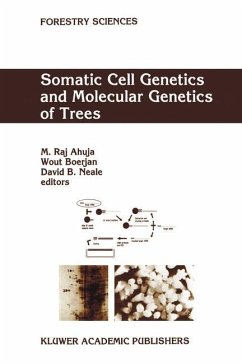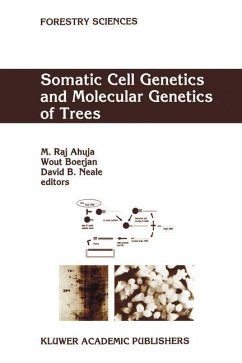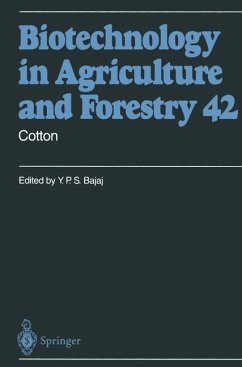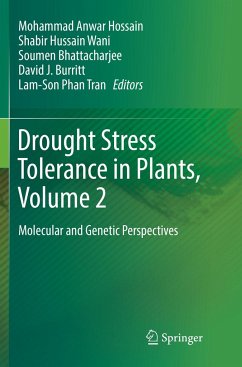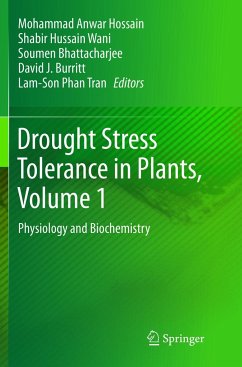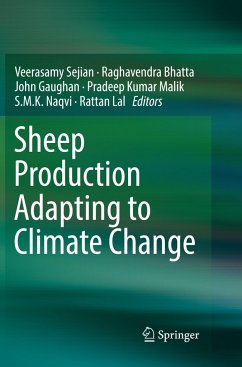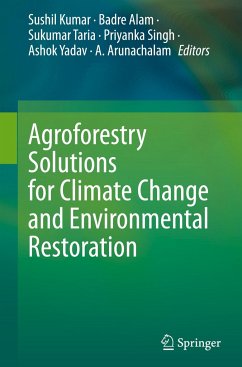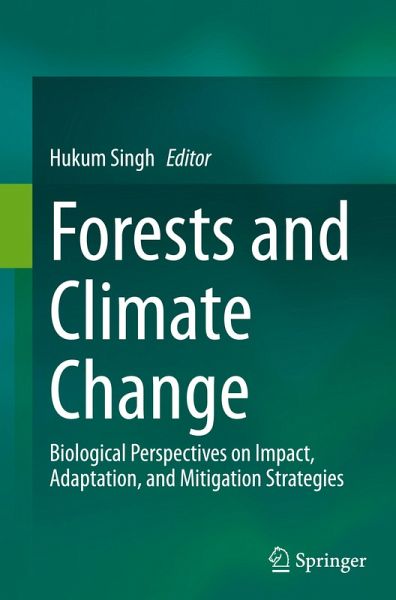
Forests and Climate Change
Biological Perspectives on Impact, Adaptation, and Mitigation Strategies
Herausgegeben: Singh, Hukum

PAYBACK Punkte
88 °P sammeln!
This book comprehensively examines the complex relationship between forests and climate change from a biological perspective. It explores the effects of climate change, such as rising temperatures, greenhouse gas emissions, changing rainfall patterns, droughts, and cold spells, on individual trees and forest ecosystems. It considers how climate change affects forest structure, function, composition, and biodiversity, and the adaptive strategies forests employ to cope with changing conditions.The book focuses on understanding the adaptive capacity of forests and explores different mechanisms at...
This book comprehensively examines the complex relationship between forests and climate change from a biological perspective. It explores the effects of climate change, such as rising temperatures, greenhouse gas emissions, changing rainfall patterns, droughts, and cold spells, on individual trees and forest ecosystems. It considers how climate change affects forest structure, function, composition, and biodiversity, and the adaptive strategies forests employ to cope with changing conditions.
The book focuses on understanding the adaptive capacity of forests and explores different mechanisms at stand and ecosystem levels that enable forests to respond to changing climatic conditions. It discusses how forests acclimate and adapt to new climates by modulating growth rates, morphology, phenology, physiology, biochemistry, and species composition. The role of genetic diversity and evolutionary processes in shaping forest resilience and adaptation is also explored. The bookalso explores potential mitigation strategies to reduce the impacts of climate change. Besides, this book discusses the ecological principles and the involvement of local communities in conservation and restoration efforts as alternative strategies to enhance the resilience of forest ecosystems against climate change.
The book provides practical recommendations for policy makers, forest managers, and conservation practitioners to develop effective climate change adaptation and mitigation strategies in forest landscapes. This book serves as a valuable resource and a guide for researchers, students, and professionals in various fields to protect and sustainably manage vital ecosystems in a rapidly changing climate.
The book focuses on understanding the adaptive capacity of forests and explores different mechanisms at stand and ecosystem levels that enable forests to respond to changing climatic conditions. It discusses how forests acclimate and adapt to new climates by modulating growth rates, morphology, phenology, physiology, biochemistry, and species composition. The role of genetic diversity and evolutionary processes in shaping forest resilience and adaptation is also explored. The bookalso explores potential mitigation strategies to reduce the impacts of climate change. Besides, this book discusses the ecological principles and the involvement of local communities in conservation and restoration efforts as alternative strategies to enhance the resilience of forest ecosystems against climate change.
The book provides practical recommendations for policy makers, forest managers, and conservation practitioners to develop effective climate change adaptation and mitigation strategies in forest landscapes. This book serves as a valuable resource and a guide for researchers, students, and professionals in various fields to protect and sustainably manage vital ecosystems in a rapidly changing climate.






